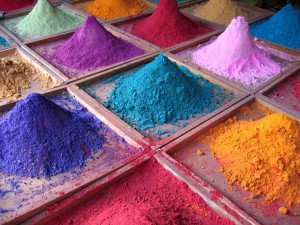Oil Painting Terms: Part One
Oil Painting Terms
Oil painting has several words that ought to be learned prior to obtaining a brush. Many oil painting terms origin from Latin roots so mispronunciations are very common. Please bear in mind that there may be some variation between the various professionals, organizations and especially between different languages following translation to English. Here are some of the common terms that a new artist should be familiar with.
Abstraction – The process of leaving out of consideration one or more properties of a complex object so as to attend to others.
Acrylic – A type of rapid drying and versatile synthetic paint that is an especially popular with artists working today. The term is also used as a generic term for any synthetic paint medium. Acrylics have good adhesive and elastic properties, they resist ultraviolet light and chemical degradation and are easy to remove with mineral spirits. They are often used in the restoration of damaged oil paintings.
Adumbration – A sketchy, imperfect or faint representation.
Altarpiece – A painted or carved screen placed above and behind an altar or communion table.
Alkyd – Synthetic resin used in paints and mediums to work as a binder that encapsulates the pigment and speeds the drying time.
Alla Prima – Technique in which the final surface of a painting is completed in one sitting, without underpainting. Italian for “at the first”.
Analogous Colours – Colours that are closely related, or near each other on the colour spectrum. Especially those in which we can see common hues.
Applied Art – As distinct from fine art, refers to the application of decoration to useful objects (such as ceramics, furniture, jewelry, etc.)
Aquatint – A method of etching that imitates the broad washes of a watercolour.
Artists’ Agent – A third party who handles the business and promotional aspects of an artist’s career. Many artists’ agents are also gallery owners. Sales agents sell a completed product, whereas artists’ agents tend to also negotiate licensing and publishing deals, organize exhibitions, handle PR and promotion and have some influence on the direction in which an artist’s career develops.
Batik – A painting or design that is applied to cotton using wax and dye. It often comes from the Far East or Africa. It is important to identify the correct way round for the image since the back is very similar to the front. Before stretching, batik should generally be placed between two sheets of brown paper or tissue and ironed; the heat will release any excess wax which will be absorbed by the paper. Batiks do not normally require squaring, as the weave is too close for this to be a problem.
Binder – The ingredient (such as oil, acrylic, egg tempera or gum arabic) in paints that causes the particles of pigment to adhere to one another and to a support.
Brushwork – The characteristic way an artist applies (brushes) paint onto a support producing an individualistic texture as well as aesthetic appeal and value. One of any artists most powerful attributes.

Canvas – Closely woven cloth usually of cotton or linen that is used as a support (surface) for paintings.
Catalogue – A list of works of art often associated with an exhibition or auction that provides information on the works themselves, the artist, the materials and provenance.
Certificate of Authenticity – Certifies the authenticity of an individual piece in an edition and can also state the current market value.
Charcoal – Pure carbon prepared from vegetable or animal substances. Finely prepared charcoal in small sticks used as a drawing implement.
Chiaroscuro – In drawing, painting, and the graphic arts, chiaroscuro (ke-ära-skooro) refers to the rendering of forms through a balanced contrast between light and dark areas. The technique that was introduced during the Renaissance, is effective in creating an illusion of depth and space around the principal figures in a composition. Leonardo Da Vinci and Rembrandt were painters who excelled in the use of this technique.
Commission – To order an original, usually customized work of art from the artist.
Consignment Note – Signed agreements between artists and galleries to confirm that a gallery has taken possession of a painting, but that it the artist’s property until paid for in full. A consignment note represents proof of ownership in the event of an insurance claim, so it should always make clear that the work is insured the gallery while in its possession, whether in transit, at a fair, at a client’s house etc.
Copperplate – An engraving consisting of a smooth plate of copper that has been etched or engraved.
Copyright – The artist retains the copyright in a work regardless of whether the original has been sold. Copyright is separate from the painting itself, and the artist has the right to sell it. Legally, transfer of copyright has to be in writing. Within the EU copyright extends for 70 years after the artist’s death.
Crosshatching – Shading consisting of multiple crossing lines, typically usually used in pencil and ink drawings.
…to be continued
Image source: www.webartacademy.com
